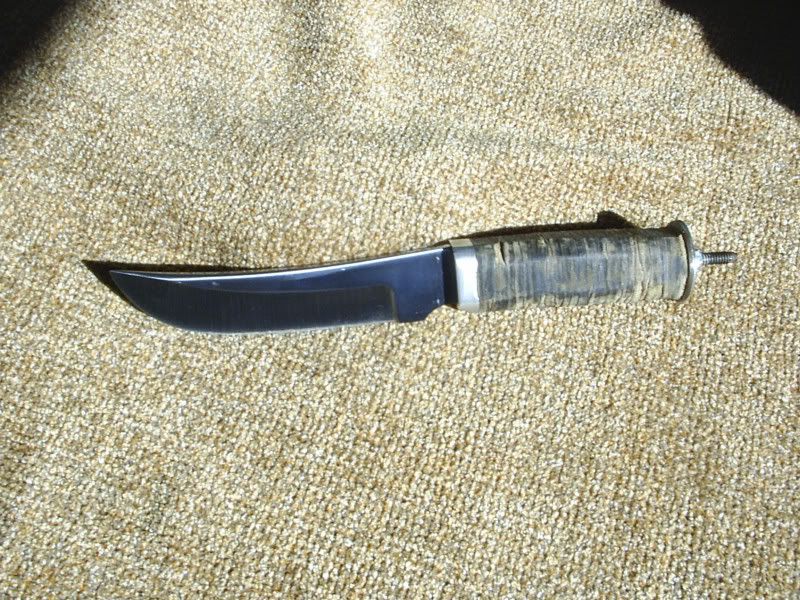I guess it's time to spill the beans.
I've had many requests for the ins and outs and WIPs over the years but never got around to it. Here's my way of doing it after about 30 years of trial and error with the best results to date.

*Start with a finished blade with the tang about 1/3 higher than it is wide. Guard or bolsters attached. This adds stability to the washers and keeps them from twisting.
*Lay out your tang so when all the washers,spacers and whatever do-dads you're using leaves you at least 4 full threads into your butt cap/pommel. Thread the tang 1/2" or better. I draw out my knives and stick to the plan.
* Cut your leather into roughly 1-1/4"x 1-1/2" rectangles. Don't worry about punching the tang holes, I fit each one individually because my tangs taper.
*Take your washers and place them in a sealed container of satin polyurethane for 3 days. I use a vacuum jar and leave it under vacuum until I see no more bubbles escaping. After removing them let dry for at least 24 hours. I make enough to handle several knives.
*When dry, I rough up the faces on a 80 grit belt. Just a quick pass on each side. Done. Fit your individually cut spacers and washers dry on the tang for a test fit.
*Once you're happy remove everything in order and start mixing epoxy and do it for real. Epoxy each face. When you get to your last spacer, squeeze everything down with a fender washer and nut (pic # 2) with a square of wax paper between the washer and last spacer. Tighten it firmly but you don't have to use the hammers of hell on it.
*Put the whole mess in a warm dry place to dry 24 hrs. This gives you time to work on your pommel. Tip...tap your pommel about 4-5 threads deep and DON'T final shape it. Screw it on the tang firmly THEN rough shape it. If you shape it before fitting it won't allign properly. Punch radiating cuts around the threaded hole with a sharp punch, mix epoxy and put on pommel. Let dry.

I cut out the general shape on the band saw and do most of the rough grinding with a 220 belt then finish as desired. Finish with a good wax and buffing. I guess I'll start thinking about a WIP with pictures.
Rudy




